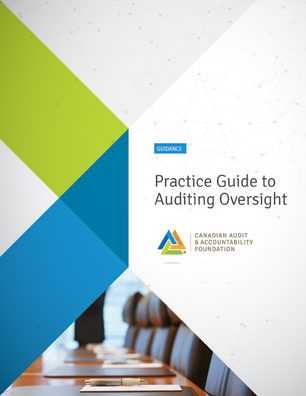Introduction
 Welcome to the Practice Guide to Auditing Oversight!
Welcome to the Practice Guide to Auditing Oversight!
Strong oversight is important to the success of every public sector organization in delivering public services effectively and in promoting accountable government.
The purpose of this Practice Guide is to provide public sector auditors with current guidance that will help them to plan, carry out and report on legislative and internal audits that address oversight. By combining theory and practical methodology in this Practice Guide, we seek to inspire high-quality and high-impact audits of oversight at all levels of government—whether oversight is the sole focus of an audit or only one of several aspects examined.
The Practice Guide’s focus is on oversight in the public sector. Specifically, it includes guidance on how to audit oversight bodies and functions responsible for:
- oversight of public agencies, boards and authorities (such as Crown agencies, school boards, and health authorities) and
- oversight of major initiatives in departments and ministries (critical programs, projects, services, or horizontal initiatives managed by departments or outsourced to a private sector provider).
The Guide has been designed to meet the information needs of auditors at the various stages of their audit projects. If you are:
- looking for information on what is oversight and why effective oversight is important, or on different types of oversight bodies and their functions;
- starting to plan an audit and wondering where to start;
- trying to decide what your audit focus should be;
- planning an audit of oversight of a public agency, board or authority and searching for:
- examples of questions that can be asked to obtain useful knowledge of business
- indicators that oversight may be at risk
- information on possible audit approaches
- examples of suitable audit objectives and criteria
- planning an audit of oversight of a major initiative in a ministry or department and searching for:
- examples of questions that can be asked to obtain useful knowledge of business
- indicators that oversight may be at risk
- information on possible audit approaches
- examples of suitable audit objectives and criteria
- pondering which type of audit evidence would best help you to conclude on your criteria and objectives;
- ready to draft your report, but could use some ideas on how to provide sufficient context on the organization, program, or project being audited;
the Practice Guide has answers and guidance for you, only a few clicks away!
The Practice Guide is a flexible tool that has been developed to be used within each audit office’s existing processes and procedures, in accordance with existing auditing and assurance standards. It is therefore a complement to current audit methodology.
Users of the Practice Guide do not have to read all its sections in order. Rather, the Guide has been designed to provide easy access to any section of interest and to allow readers to jump rapidly from one section to any other. Auditors are thus free to consult only the sections that best meet their needs.


